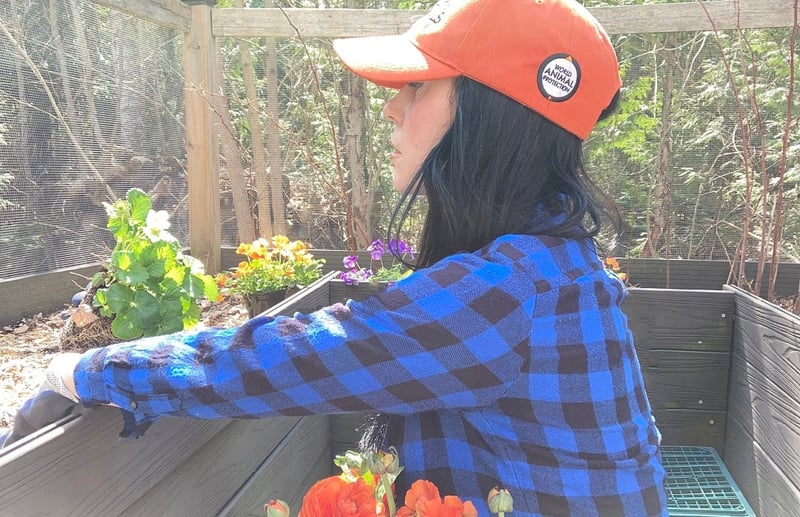
Spring has sprung, and if you’ve ever thought about growing your own vegetables, there’s no better time to start than now!
Whether you’ve got a big backyard, a sunny balcony or just a windowsill, you can grow something fresh, delicious and nutritious! 🌱
I’ve been growing veggies, fruits and herbs for a few years now and have learned a lot, mostly through trial and error. The biggest lesson I've learned is that success is made by small, daily acts of care and observation. That's what took my gardens from fine to fantastic. Most common garden problems like poor drainage, lack of sun and munchy bugs can be overcome by paying close attention each day.
For me, gardening is a daily ritual that makes me feel connected to something larger than myself. It's rewarding, fun, and yes, even the fails teach you something. I really encourage everyone to give it a try!
Here are a few tips to get started growing your own food:
1. How much sunlight and how’s your soil?
Whether you’re using a balcony or a big garden plot, you can maximize your success by knowing how many hours of sunlight you get and choosing crops accordingly. Healthy soil is key, so aim for rich, well-draining soil that’s ready to nourish your veggies.
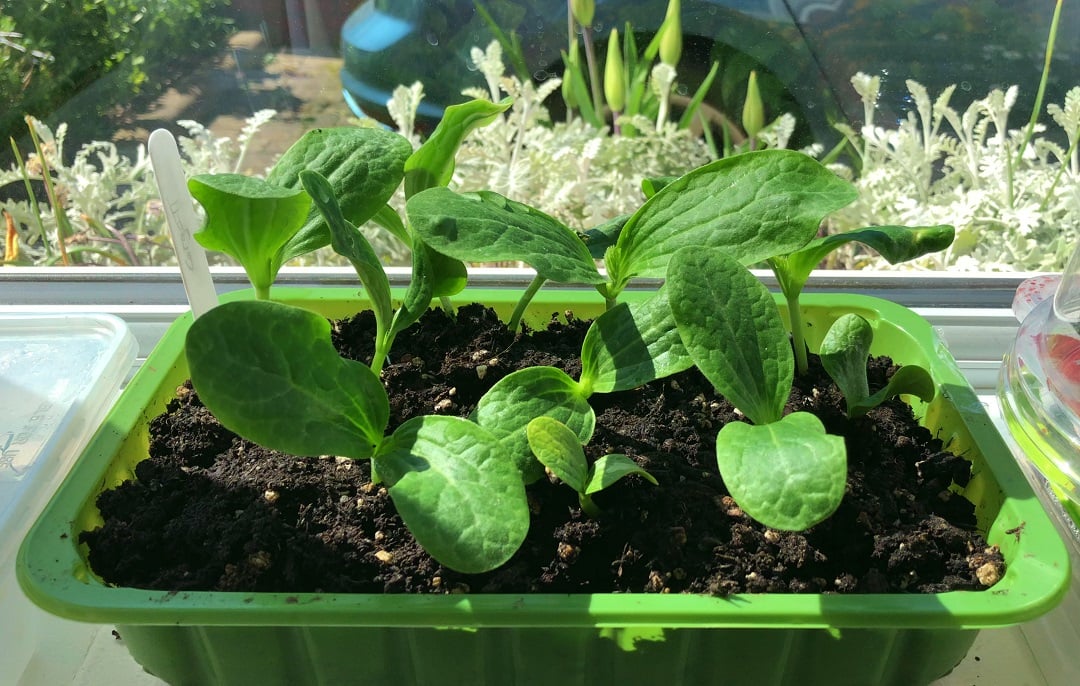
Photo: NGarden21 / Shutterstock
👩🌾 From my garden to yours: Add well-rotted compost for a nutrient boost - your plants will love it.
Digging a little deeper: Growing in containers or raised beds means total control of pH and nutrients. If you’re planting in the ground, test your soil to know more about it or chat with your neighbours about what has worked for them. Grow a garden and a community!
2. What to sow and grow
Once you have a sense of your environment, decide what you want to grow. My advice is to start with what you like to eat and beginner-friendly crops. Radishes, most beans and peas grow quickly, and I have yet to kill kale.
Some plants like tomatoes, peppers, onions and herbs, benefit from being started indoors 6-8 weeks before the last frost (that’s what I do here in Southern Ontario but check your local frost dates to get the timing right for your area!).
🌿 From my garden to yours: Instead of starting all your crops at once, try planting small batches of veggies, like peas, lettuce or radishes every couple of weeks for a steady harvest. It’s called succession sowing and it’s one of my favourite tricks for keeping my garden full of fresh produce.
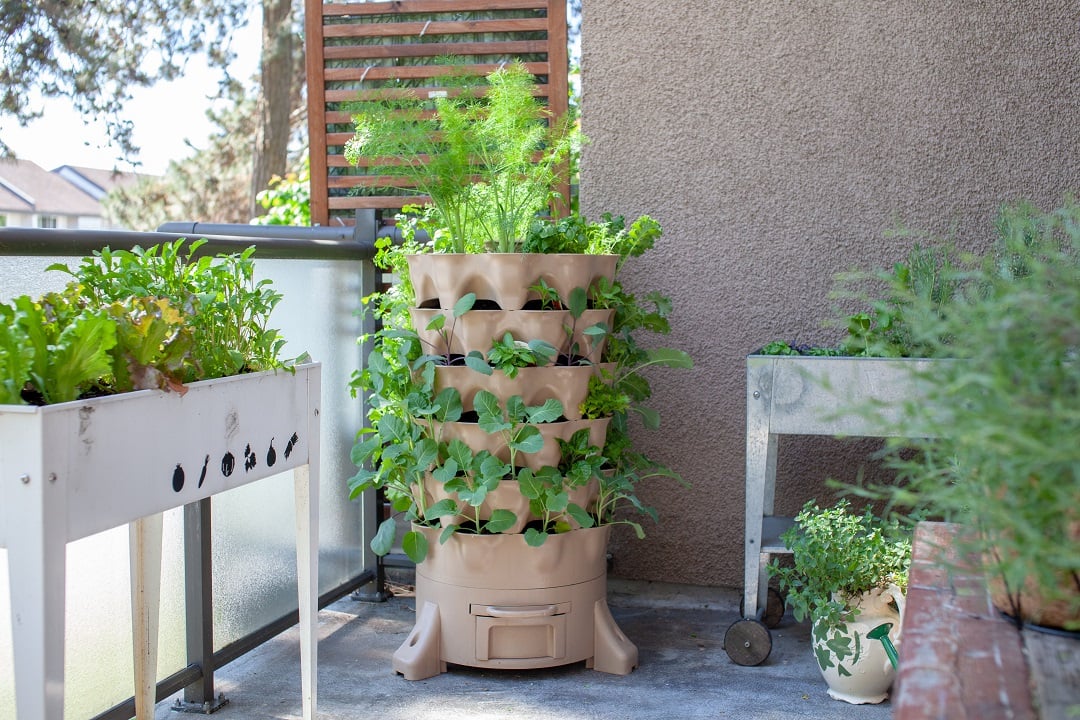
Here’s how I start seeds indoors: 🌱
- Use trays or repurposed containers with drainage (toilet paper rolls are my go-to).
- Use seed-starting mix, plant to the depth listed on the package, lightly cover with a thin layer of soil and water lightly. Read carefully as some seeds suggest a pre-soak.
- Make sure to label your pots with the plant name and date. Sprouts look alike, especially in the early stages!
- Place in a warm, sunny spot (a grow light helps, but isn’t essential).
- Keep the soil moist but not soggy and rotate the containers every few days for even growth.
- Once seedlings sprout, which can take several weeks, thin them out so the strongest can thrive. You can compost the extras or try transplanting them.
Digging a little deeper: I prefer to use the biodegradable cardboard tubes from the middle of toilet paper rolls to start my seedlings over the nicer looking plastic cell packs. Less plastic in my life is always a positive, and the narrow tube encourages long, straight root growth that makes transplanting easy. They work especially well for carrots! 🥕
3. Transplant with care
Once your seedlings are big enough and the frost is behind us, it’s time to move them outside, but not all at once! Start with a process called hardening off: bringing them outdoors for a few hours each day, slowly increasing the time over a week to help them adjust to the weather. While this sounds tedious, it’s incredibly important to decrease the stress on the plant.
Then it’s time to transplant! Choose a mild, calm day and water your seedlings first. Gently ease them from their containers, dig a hole twice as wide as the roots and tuck them in. Water well after planting and add a bit of mulch around the seedling to help lock in moisture.
🍅 From my garden to yours: Some plants thrive when planted near each other – it’s called companion planting, and it can help boost growth, deter pests and even improve flavour. Some of my favourite pairings include tomatoes and basil, carrots and onions and cucumbers and nasturtiums!
Digging a little deeper: Sowing seeds outdoors can also happen now if your soil feels warm to the touch. Once your soil is ready, use a spade to dig a small trench, sow, cover lightly and water. If you’re planting rows, make sure you leave ample space between them so you can harvest easily. To keep things tidy, consider using a drill marker (a string tied to two stakes to sow seed in a straight line).
4. Throughout the growing season
- Water regularly, especially on hot days. Aim to keep the soil consistently moist (not wet) and try to water early in the morning to avoid evaporation.
- Avoid problems: Weed often to reduce competition for water, sunlight and nutrients. Watch out for munchy bugs and mold. Deterants like eggshells for slugs, dish soap sprays for fungus and fencing for rabbits are cheap and humane ways to prevent future problems.
- Provide support: Plants like beans need support to stop them flopping over and becoming easy snacks for slugs instead of you! A trellis for beans, stakes or cages for tomatoes and sticks for peas are a lifesaver.
- Maximize your yield: Like succession planting, maintenance pruning like pinching out tomato side shoots will mean more and bigger fruit. Do your reading to know what your particular crop species need.
🌼 From my garden to yours: Planting flowers nearby will help draw in crucial pollinators like bees and butterflies – more pollinators mean better yields for your veggies! 🐝🦋
Digging a little deeper: The benefits of flowers go further... marigolds can deter insects like aphids, whiteflies and cucumber beetles, and some blossoms like nasturtium, pansy and even roses are edible too!
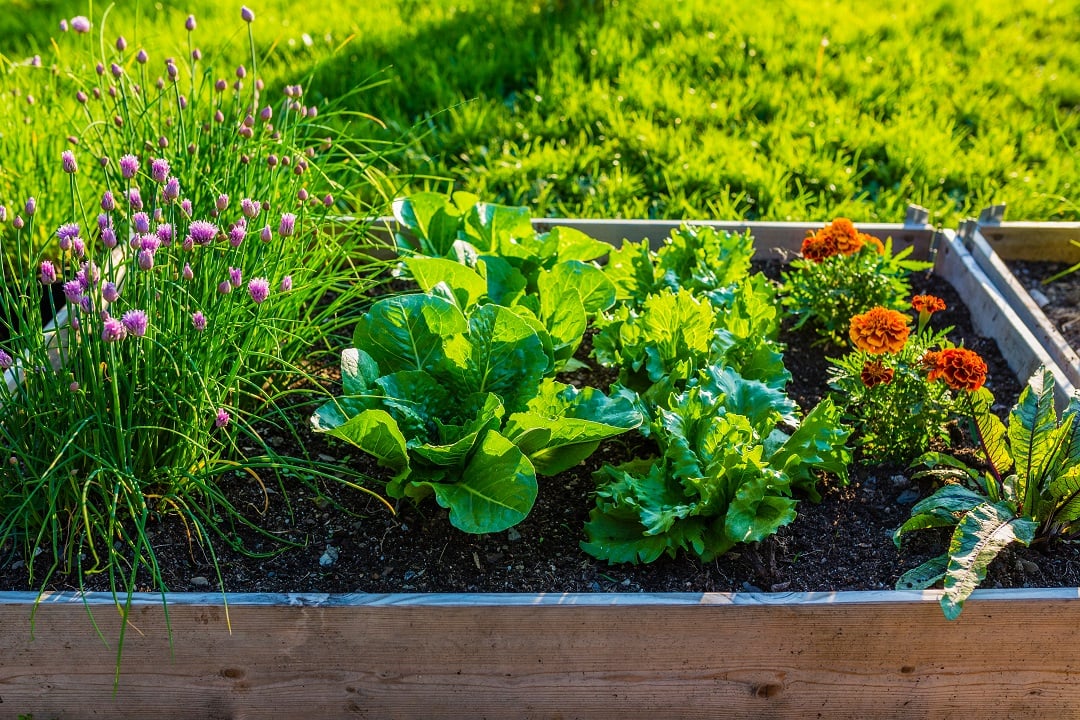
5. Harvest and enjoy the fruits (and veggies) of your labour!
When your plants are mature, it’s time to dig in! Harvesting will depend on the crop, but in general try to harvest in the cool of the morning when the plant’s moisture content is highest. With leafy greens and herbs, you can trim what you need and let the rest continue growing for another harvest.

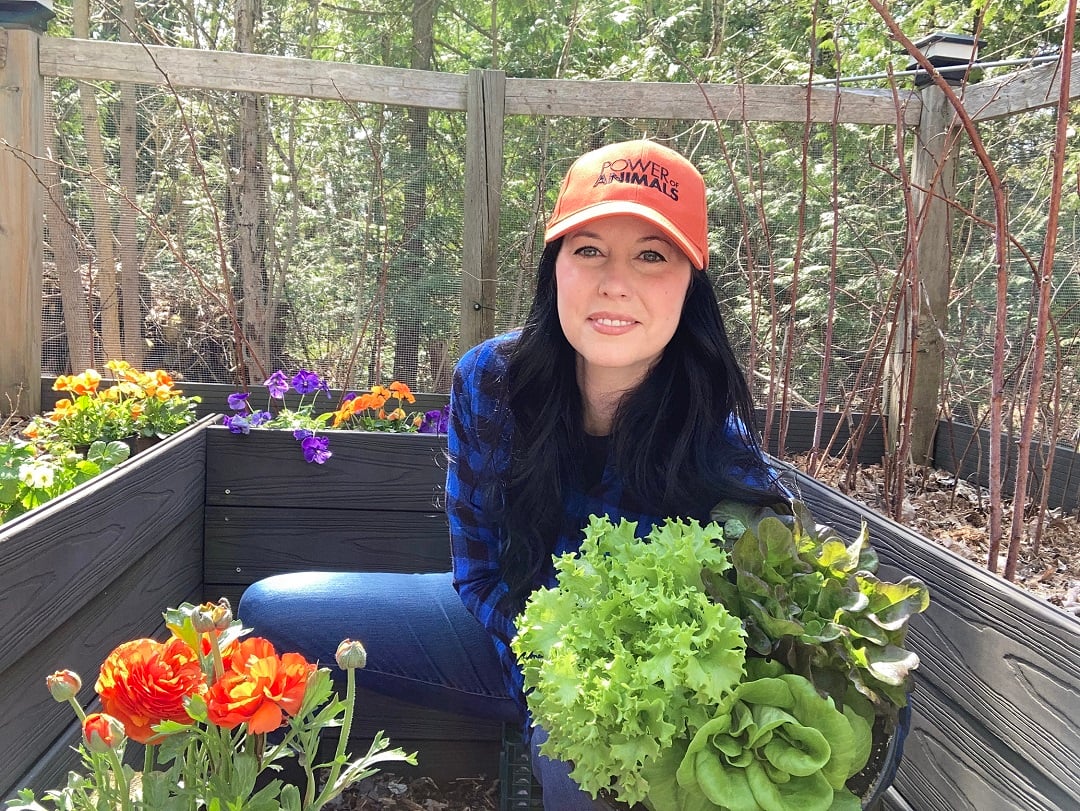
Eat your veggies! 🥗
Growing (even just a little) of your own food is incredibly rewarding. It connects us to the land, helps us appreciate where our food comes from and can even inspire us to make more thoughtful food choices.
Go at your own pace and don’t worry if you mess up. I started with a few simple herbs that I impulse-bought from a corner store – and I was hooked. For you, maybe it’s a hanging basket of strawberries (which I highly recommend), or a pot of fresh basil on the windowsill – whatever gives you that spark of joy can be a game changer.
There’s something so satisfying about stepping outside and picking a ripe tomato or a handful of herbs that you’ve grown yourself. Meals feel more special, and it’s made me more mindful about what I eat and where it comes from.
If you’re looking for ways to eat more plants, growing your own is a delicious place to start!
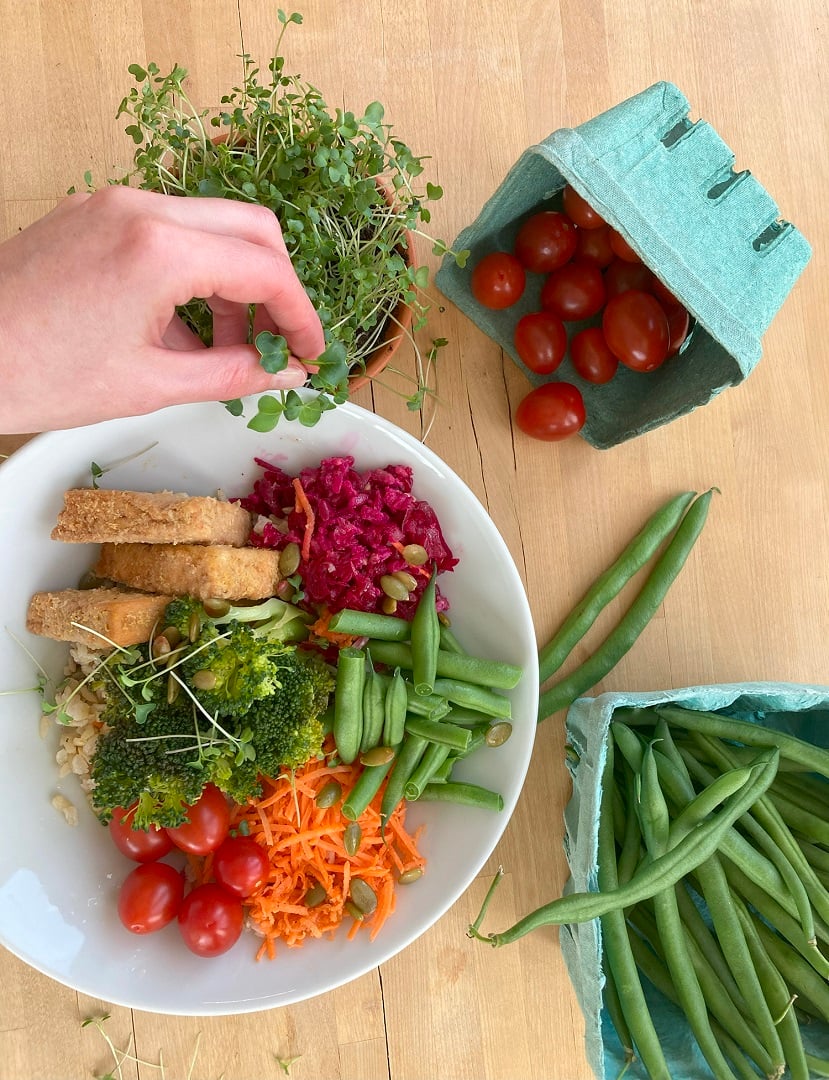
Get your plan
Try our meatless meal planner to reduce your carbon emissions while making food choices that help improve the lives of animals.
